Top 10 Most Beautiful Historical Sites in India
India is one of the world's oldest civilizations, dating back over 250,000 years. India is a tremendously varied country, with dozens of languages spoken and ... read more...distinct modes of life practiced all throughout the country. It has the second-biggest population in the world, accounting for about 6% of the world's total population and the seventh-largest by area. India has a plethora of remarkable ancient sites, including over 300,000 mosques and 2 million Hindu temples, as a result of its vast and varied past. Here are the most beautiful historical sites in India that should not be missed.
-
Taj Mahal is an ivory-white marble mausoleum in Agra, India, on the right bank of the Yamuna River. It was built in 1632 by Mughal emperor Shah Jahan to hold the tomb of Mumtaz Mahal, his favorite wife, as well as Shah Jahan's own mausoleum. The mausoleum is placed informal gardens and is surrounded on three sides by a crenelated wall. It is part of a 17-hectare complex that also contains a mosque and a guest house.
The tomb was substantially finished in 1643, although work on other aspects of the building proceeded for another ten years. The Taj Mahal complex is thought to have been finished in its entirety in 1653 at a cost of over ₹32 million, which would be around ₹70 billion in 2020 (around $1 billion). 20,000 artisans worked on the project, which was overseen by a board of architects chaired by Ustad Ahmad Lahauri, the emperor's court architect. The Taj has used several sorts of symbols to depict natural beauty and spirituality.
In 1983, Taj Mahal was named a UNESCO World Heritage Site for being "India's gem of Muslim art and one of the world's most generally loved masterpieces." Many consider it to be the finest example of Mughal architecture and a symbol of India's long history. The Taj Mahal has over 6 million tourists each year and was named one of the New 7 Wonders of the World (2000–2007) project winners in 2007.
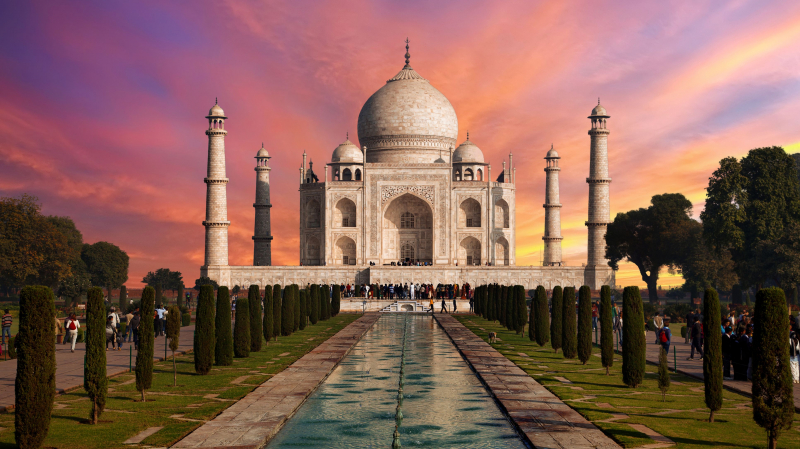
Source: thoughtco -
Brihadishvara Temple, also known as Thanjai Periya Kovil and Rajarajeswaram, is a Hindu Dravidian-styled temple dedicated to the deity Shiva in Thanjavur, Tamil Nadu, India. It is one of the biggest Hindu temples in the world, as well as an outstanding example of completely realized Tamil architecture. The temple is part of the UNESCO World Heritage Site known as the "Great Living Chola Temples," which also includes the Chola dynasty era Gangaikonda Cholapuram temple and Airavatesvara temple, which are about 70 and 40 kilometers northeast, respectively.
This 11th-century temple's original monuments were erected around a moat. Brihadishvara Temple had the gopura, the main temple, its great tower, inscriptions, frescoes, and sculptures mostly linked to Shaivism, but also to the Hinduism traditions of Vaishnavism and Shaktism. The temple has been damaged during its history, and some artwork has been lost. In the centuries that followed, more mandapams and monuments were built. The temple is presently surrounded by strong walls built after the 16th century.
The vimana tower, which stands above the shrine and is made of granite, is one of the highest in South India. The temple has a gigantic colonnaded prakara as well as one of India's biggest Shiva lingams. It is particularly known for the high quality of its sculpture and for being the place where the bronze Nataraja - Shiva as the Lord of Dance – was commissioned in the 11th century. The temple is one of Tamil Nadu's most popular tourist destinations.
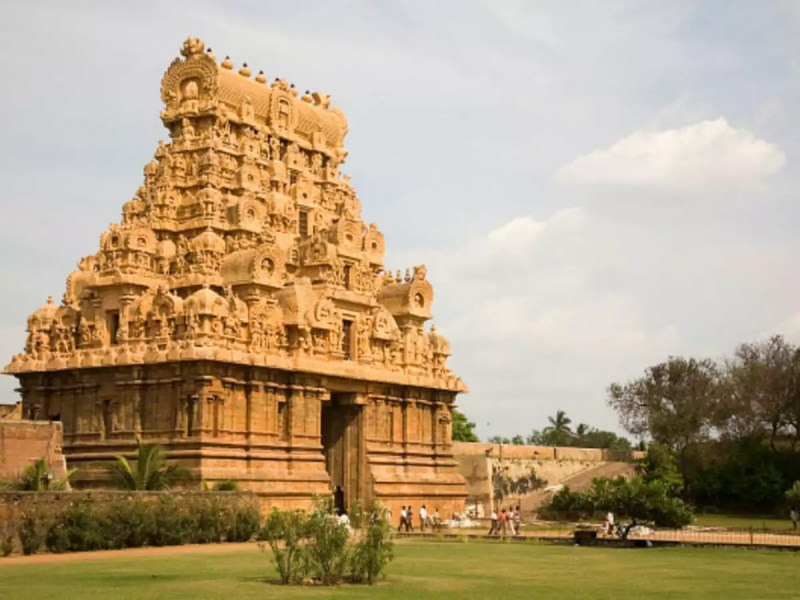
Source: timesofindia.indiatimes -
Agra Fort, one of the most beautiful historical sites in India, is a medieval fort in the Indian city of Agra. It was constructed for the great king Akbar between 1565 and 1573. It was the principal house of the Rajput kings of the Sikarwar clan until the Mughals seized it, and it was the capital of the Mughal Dynasty until 1638 when the capital was moved from Agra to Delhi. The "Lal-Qila," "Fort Rouge," and "Qila-i-Akbari" were all nicknames for it. The Marathas were the last Indian monarchs to occupy it until it was captured by the British. The Agra fort was designated as a UNESCO World Heritage Site in 1983. It's around 2.5 kilometers northwest of the Taj Mahal, its better famous sister monument. A more appropriate description of the fort is that it is a walled city.
Prior to Mahmud Ghaznavi's invasion, the history of Agra Fort is unknown, as it is for the rest of Agra. However, it was occupied by the Chauhan Rajputs in the 15th century. Sikandar Lodi moved his capital from Delhi to Agra soon after and built a few structures in the pre-existing Fort. Mughals took the fort and governed it after the first battle of Panipat. Humayun was crowned there in 1530 A.D. During the reign of Akbar, the fort was given its current appearance.
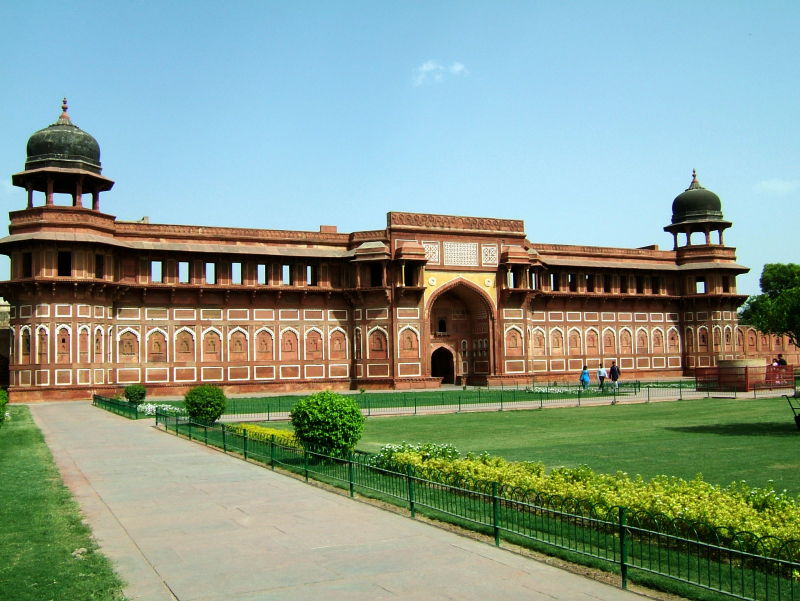
Source: wikipedia -
National Gandhi Museum, also known as the Gandhi Memorial Museum, is a museum in New Delhi, India dedicated to Mahatma Gandhi's life and ideas. The Gandhi Museum was originally established in Mumbai in 1948, shortly after Gandhi's assassination. Before settling on Raj Ghat, New Delhi in 1961, the museum has moved multiple times.
Mahatma Gandhi's artwork and personal things are on display at the National Gandhi Museum Gallery. A Satyagraha woodcut by Willemia Muller Ogterop, one of Gandhi's walking sticks, the shawl, and dhoti worn by Gandhi when he was slain, one of the bullets used to kill Gandhi, and his urn are among the most significant objects in the collection. Gandhi's ivory toothpick and part of his teeth are also on show in the museum. The museum's martyrdom gallery, memorial gallery, and art gallery, where work inspired by Gandhi is on display, are among the museum's galleries. A broad photo gallery is also available at the museum.
Aside from the museum's Gandhi-themed permanent collection, the museum also features various exhibitions focusing on Indian history. The majority of the exhibitions are centered on Indian political figures and peace movements, while there are other collections on key international events.
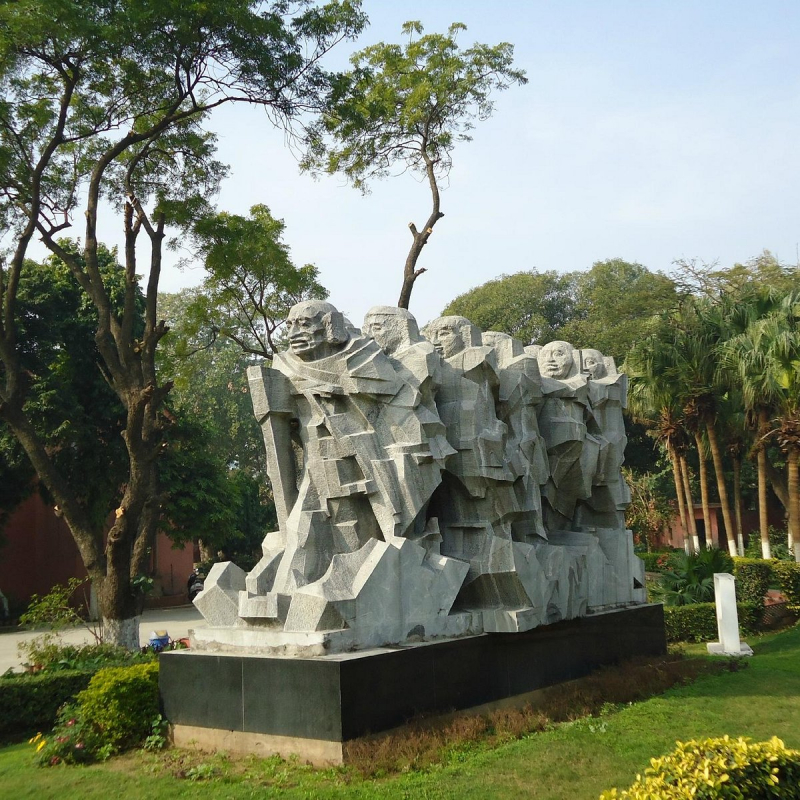
Source: tripadvisor -
Red Fort, also known as Lal Qila, is a medieval fort in Old Delhi, Delhi, India, that served as the Mughal Emperors' principal palace. When Emperor Shah Jahan chose to move his capital from Agra to Delhi, he commissioned the building of the Red Fort on May 12, 1638. Its design, which was originally red and white, is due to architect Ustad Ahmad Lahori, who also built the Taj Mahal. Under Shah Jahan, the fort marks the pinnacle of Mughal construction, combining Persianate palace buildings with Indian customs.
During Nadir Shah's conquest of the Mughal Empire in 1739, the fort was looted of its artwork and valuables. Following the Indian Rebellion of 1857, the British dismantled the majority of the fort's marble constructions. The fort's defensive walls were mostly unharmed, and it was utilized as a garrison after that.
Jawaharlal Nehru, India's first Prime Minister, hoisted the Indian flag over the Lahori Gate on August 15, 1947. The Prime Minister hoists the Indian tricolor flag at the fort's main entrance and gives a nationally broadcast address from its ramparts every year on India's Independence Day (15 August). As part of the Red Fort Complex, the Red Fort was named a UNESCO World Heritage Site in 2007.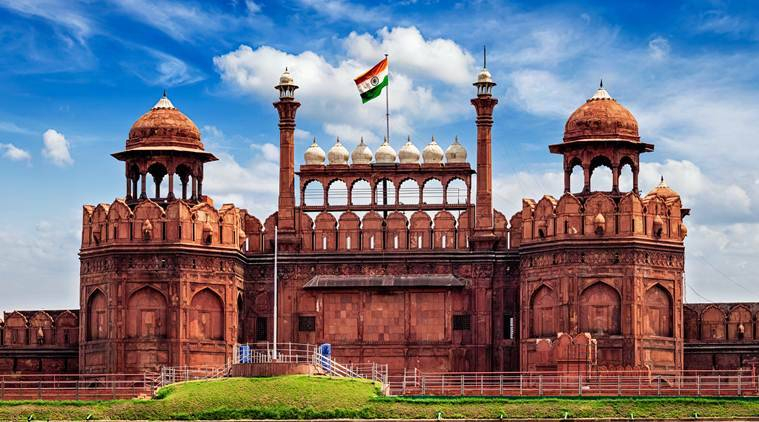
Source: indianexpress -
Hawa Mahal is an Indian palace located in the city of Jaipur. It is located on the outside of Jaipur's City Palace and extends to the Zenana, or women's rooms, and is made of red and pink sandstone. Maharaja Sawai Pratap Singh, the grandson of Maharaja Sawai Jai Singh, the founder of Jaipur, India, completed the building in 1799. He was so fascinated by Khetri Mahal's distinctive structure that he erected this great and ancient palace.
This palace is a five-story, 15-meter-high pyramidal-shaped edifice. The structure's upper three stories are the breadth of a single room, with patios in front of the first and second floors. From the street, the front elevation looks like a honeycomb with little portholes. Miniature windows, carved sandstone grills, finials, and domes adorn each porthole. It resembles a jumble of semi-octagonal bays, giving the monument its distinct aspect. The building's interior face, on the rear side, is made up of rooms with pillars and hallways with little adornment that extends all the way to the top level.
Built of red and pink colored sandstone in line with the décor of the city's other monuments, its color bears witness to Jaipur's moniker of "Pink City." Its façade, which has 953 niches with beautifully carved jharokhas (some of which are made of wood), stands in sharp contrast to the structure's simple back side. Maharaja Jai Singh's favorite resort, the Hawa Mahal, was also known as his chef-d'oeuvre due to its elegance and built-in interior. The breeze coming through the tiny windows of the façade created a cooling effect in the rooms, which was increased by the fountains placed in the center of each chamber. The above makes this place become one of the most beautiful historical sites in India.
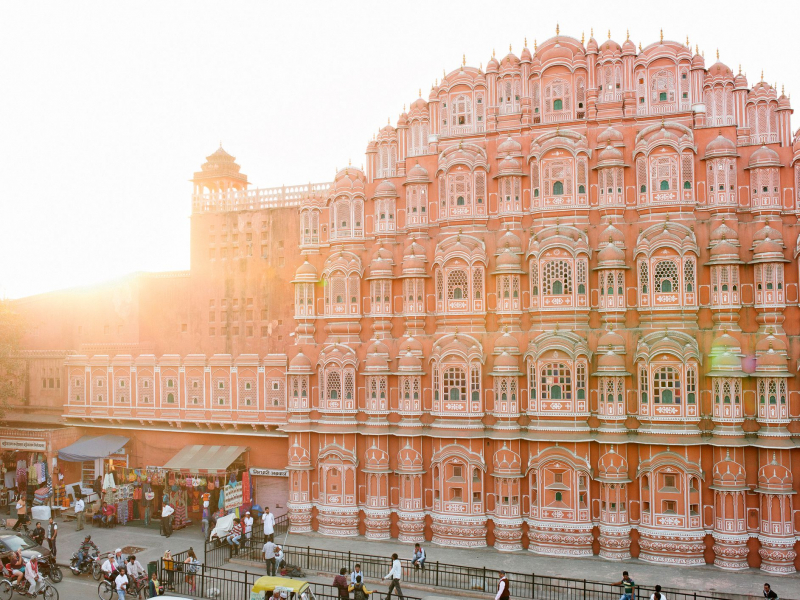
Source: tripsavvy -
The Khajuraho Group of Monuments is a collection of Hindu and Jain temples in the Madhya Pradesh district of India, around 175 kilometers southeast of Jhansi. They have been designated as a UNESCO World Heritage Site. The temples are known for their architectural symbolism in the Nagara style, as well as a few sexual sculptures.
The Chandela dynasty erected the majority of the temples at Khajuraho between 885 and 1050 AD. According to historical accounts, the Khajuraho temple complex contained 85 temples scattered over 20 square kilometers by the 12th century. Only roughly 25 temples have remained, covering a total area of six square kilometers. The Kandariya Mahadeva Temple, one of the few remaining temples, is adorned with a plethora of sculptures with complex workmanship, symbolism, and expressiveness typical of ancient Indian art.
When these monuments were constructed, the local boys lived in hermitages as brahmcharis (bachelors) until they reached adulthood, and these sculptures assisted them in learning about the worldly position of "householder." The Khajuraho group of temples were erected in tandem but were devoted to two religions: Hinduism and Jainism, implying a legacy of tolerance and respect for differing religious beliefs among Hindus and Jains in the region.
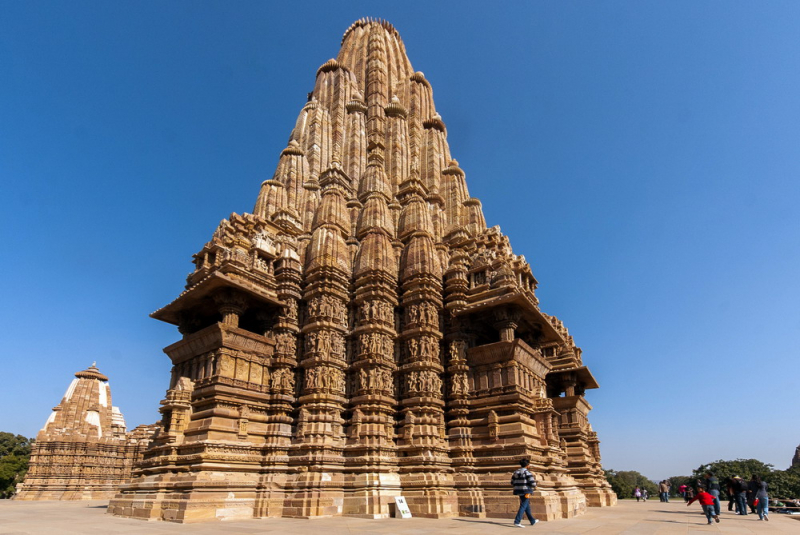
Source: redsvn.net -
Humayun's tomb is the tomb of the Mughal Emperor Humayun in Delhi, India. In 1558, Humayun's primary consort, Empress Bega Begum, commissioned the mausoleum, which was designed by Mirak Mirza Ghiyas and his son, Sayyid Muhammad. It is located in Nizamuddin East, Delhi, India, and was the first garden-tomb in the Indian subcontinent. The tomb was designated as a UNESCO World Heritage Site in 1993 and joined the list of the most beautiful historical sites in India, and substantial repair work has been completed since then.
The tomb was the first Indian edifice to adopt the Persian double dome on a high neck drum and is crowned with a high brass finial ending in a crescent, which is customary in Timurid tombs, and reaches a height of 47 meters and a plinth of 91 meters. The outer layer of the double or double-layered dome supports the white marble facade, while the inner section shapes the vast internal volume. The rest of the structure, in contrast to the pristine white external dome, is composed of red sandstone, with white and black marble and yellow sandstone details to break up the uniformity.
The structure was the first to use its unique combination of red sandstone and white marble, and it incorporates several elements of Indian architecture, such as the small canopies or chhatris that surround the central dome, which is common in Rajasthani architecture and was originally covered in blue tiles.
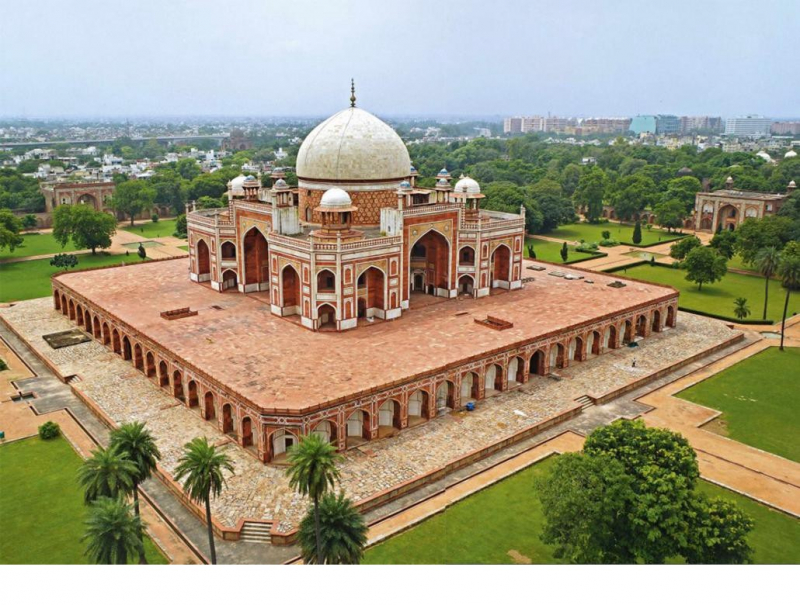
Source: medium.com -
The Qutb Minar complex in Mehrauli, Delhi, India, has monuments and structures from the Delhi Sultanate. Qutb-ud-din Aibak, who subsequently became the first Sultan of Delhi of the Mamluk dynasty, began construction of the Qutub Minar "victory tower" in the complex, named for the religious figure Sufi Saint Khwaja Qutbuddin Bakhtiar Kaki. It was resumed by his successor Iltutmish, and Firoz Shah Tughlaq, a Sultan of Delhi from the Tughlaq dynasty, finished it much later in 1368 AD.
The Tughlaqs, Alauddin Khalji, and the British were among the monarchs who constructed constructions of the complex. Other monuments in the complex include the Alai Darwaza Gate, the Alai Minar, and the Iron pillar, in addition to the Qutb Minar and the Quwwat ul-Islam Mosque. The first Quwwat ul-Islam Mosque was constructed from the ruins of 27 previous Hindu and Jain temples. The temple pillars were repurposed, and the original images were plastered over. The graves of Iltutmish, Alauddin Khalji, and Imam Zamin are all located inside the compound.
The Archaeological Survey of India has established the nearby region as the Mehrauli Archaeological Park, which has a number of historic structures, including Balban's tomb, and INTACH has restored about 40 of them. It also hosts the annual 'Qutub Festival,' which takes place from November to December and features performances by artists, musicians, and dancers over three days.
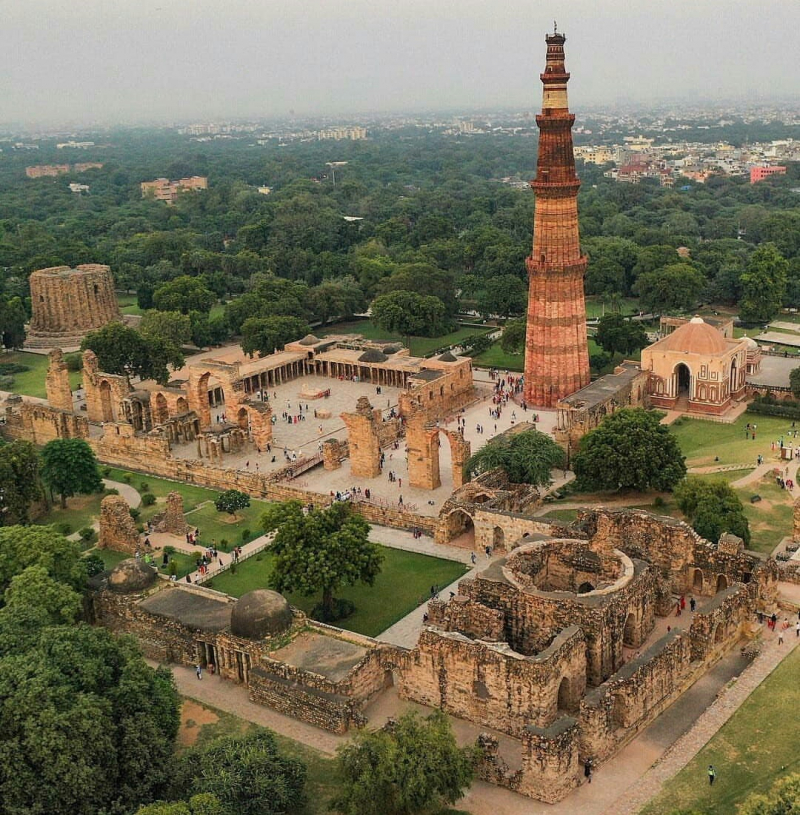
Source: thetatva.in -
The city of Jaisalmer, in the Indian state of Rajasthan, is home to the Jaisalmer Fort. It is said to be one of the world's few "living forts," since roughly a quarter of the population of the ancient city still dwells within the fort. The fort was the city of Jaisalmer for the larger portion of its 800-year existence. The earliest dwellings beyond the fort walls are reported to have appeared in the 17th century to accommodate Jaisalmer's expanding population. The Rajput Rawal Jaisal, from whom it gets its name, erected the second oldest fort in Rajasthan in 1156 AD, and it stood at the crossroads of vital trade routes (including the ancient Silk Road).
During the day, the huge yellow sandstone walls of the fort are a tawny lion color, which fades to honey-gold as the sun sets, blending the fort into the golden desert. As a result, it's also known as the Golden Fort or Sonar Quila. On Trikuta Hill, the fort rises amid the sands of the immense Thar Desert. It is now located on the southern outskirts of the city that bears its name, with its prominent hilltop location allowing the vast towers of its walls to be seen for miles.
Jaisalmer Fort, together with five other forts in Rajasthan, was designated as a UNESCO World Heritage Site in the category Hill Forts of Rajasthan during the 37th session of the World Heritage Committee in Phnom Penh, Cambodia, in 2013.
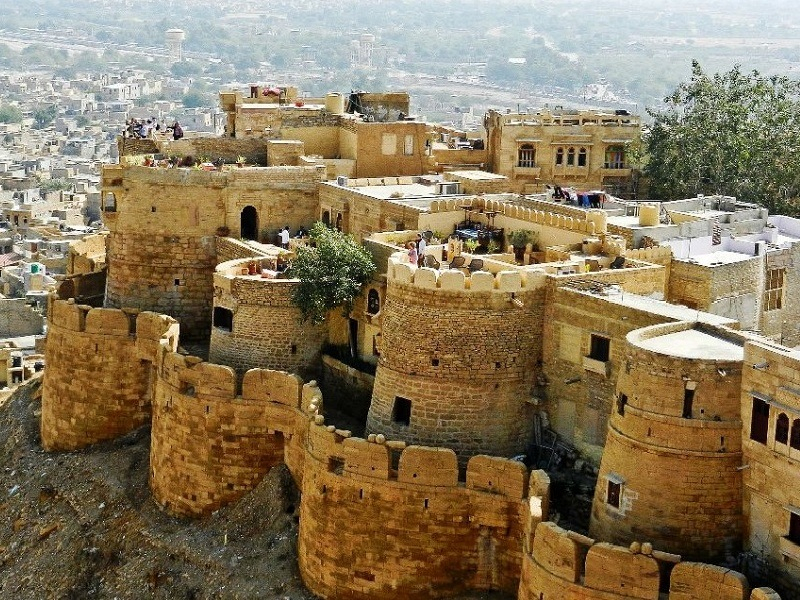
Source: trawell.in 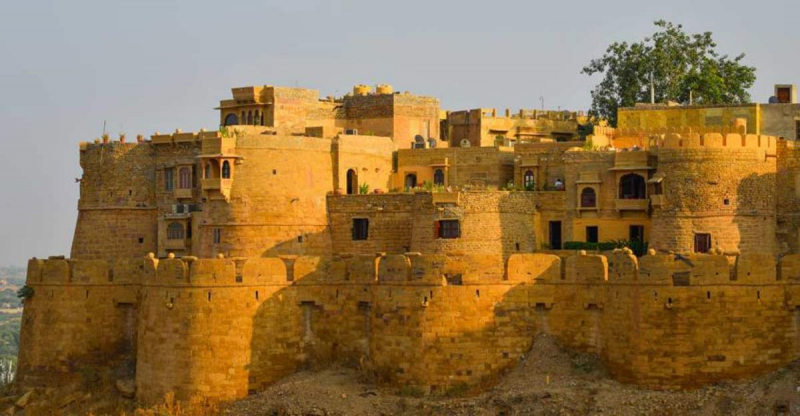
Source: onmanorama































